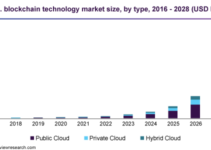The problem of inequity for minority communities in America has many faces, with access to financial services still lagging concerningly behind. Black and Latinx households make up more than 60% of the nation’s unbanked, and nearly half of underbanked households, according to FDIC surveys.
Efforts to foster greater inclusivity provided a focal point to the recent Washington DC Fintech Week; FinTechs could play a big role in helping build broader platforms for minority deposit institutions and community development financial institutions.
“I see it as an opportunity to expand their bases, to offer more products and services in an efficient manner,” said FDIC Chairman Jelena Williams. “The trick for us on the regulatory side is how we manage those partnerships.”
The FDIC has worked to build pathways for the third-party partnerships that power this kind of platform expansion, with a particular eye on the relationship between FinTechs and smaller banks. These partnerships can also help to reduce onboarding time and speed up payments generally, which is important for lower-income households more at risk for dealing with income volatility.
That volatility in itself has long kept the underbanked from taking full advantage of the lower-cost but slower payment rails; check cashing services and payday loans are extremely high-cost ways to access money but do offer immediate access in exchange for often predatory rates.
It’s an area where FinTechs can make a large difference, by offering immediate movement of money in some cases for much more reasonable fees connected to a banking institution. “More than half of unbanked individuals have access to a smartphone, but do not have a checking or savings account, while many banks in low-income areas depend on deposits sourced from outside their local area for funding,” Williams said.
Access to the full banking system – and, ultimately, to more affordable credit – would not only help families through crises, but would also long-term lead to increased prosperity in these underserved communities, driving up the type of creditworthiness so vital to accessing wealth-building opportunities.
“To change the status quo and address the gap in financial belonging, we – public and private sector entities alike – will have to think outside the box,” Williams said. “The FDIC has done just that, in more ways than one.”
